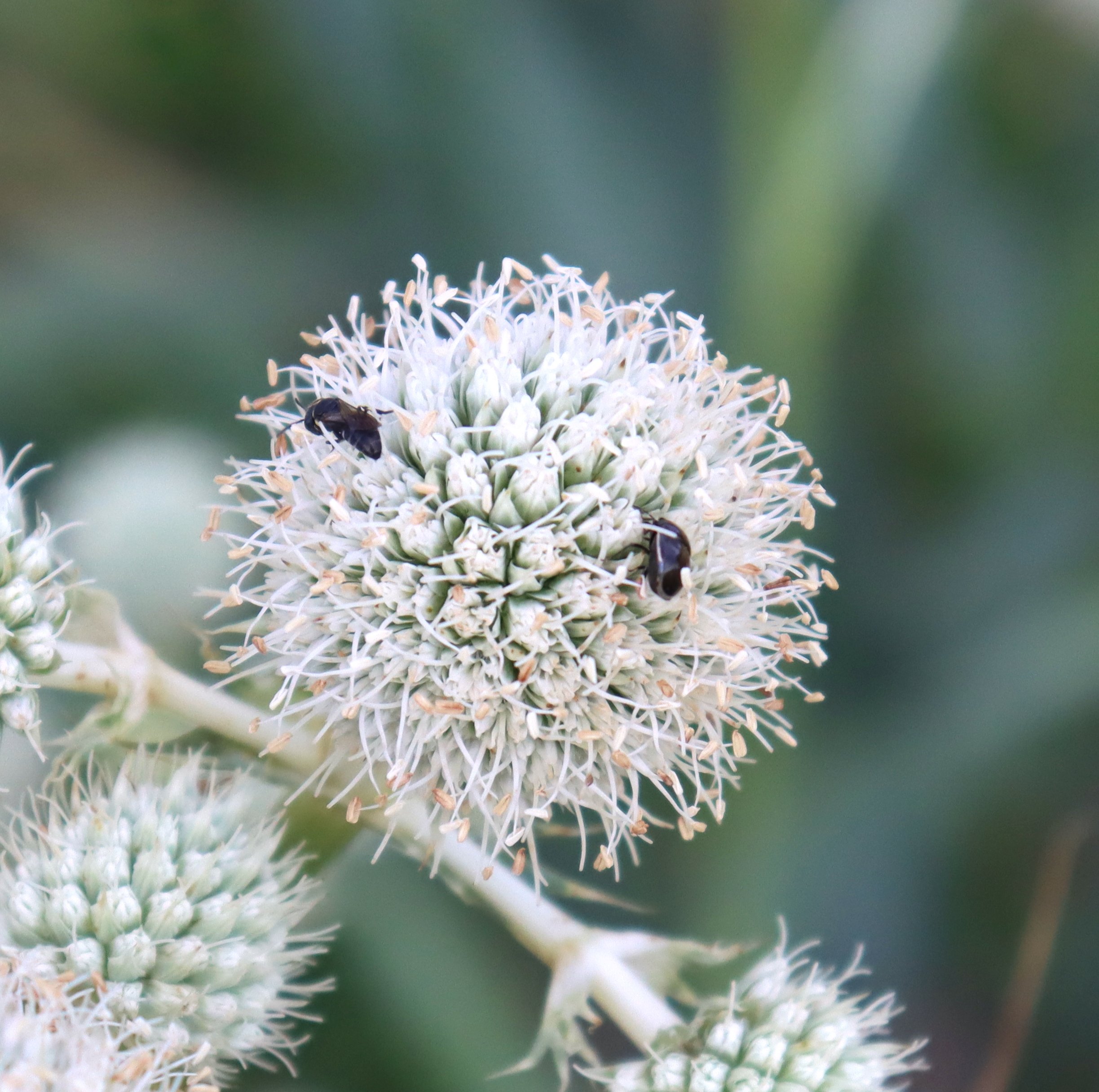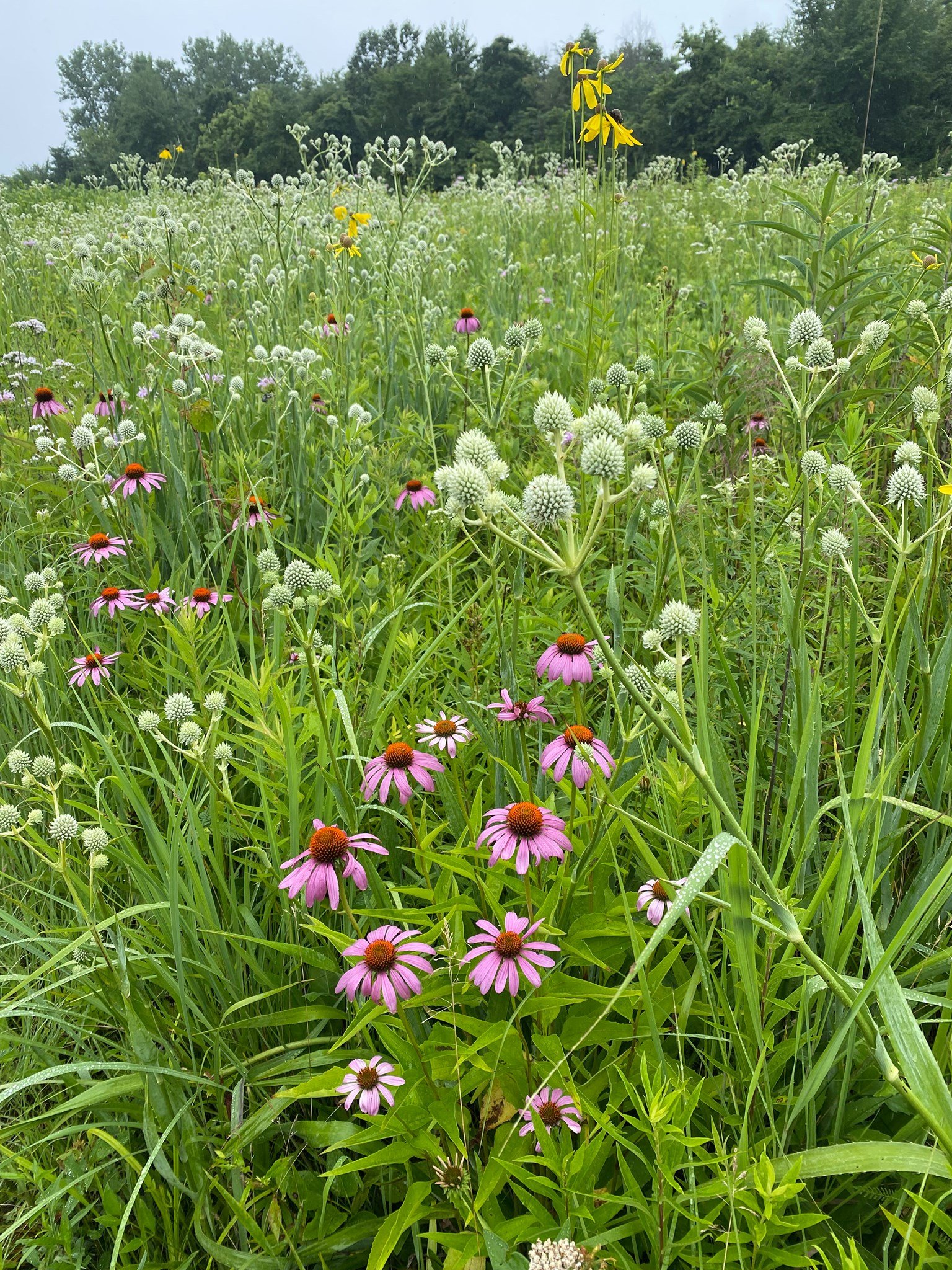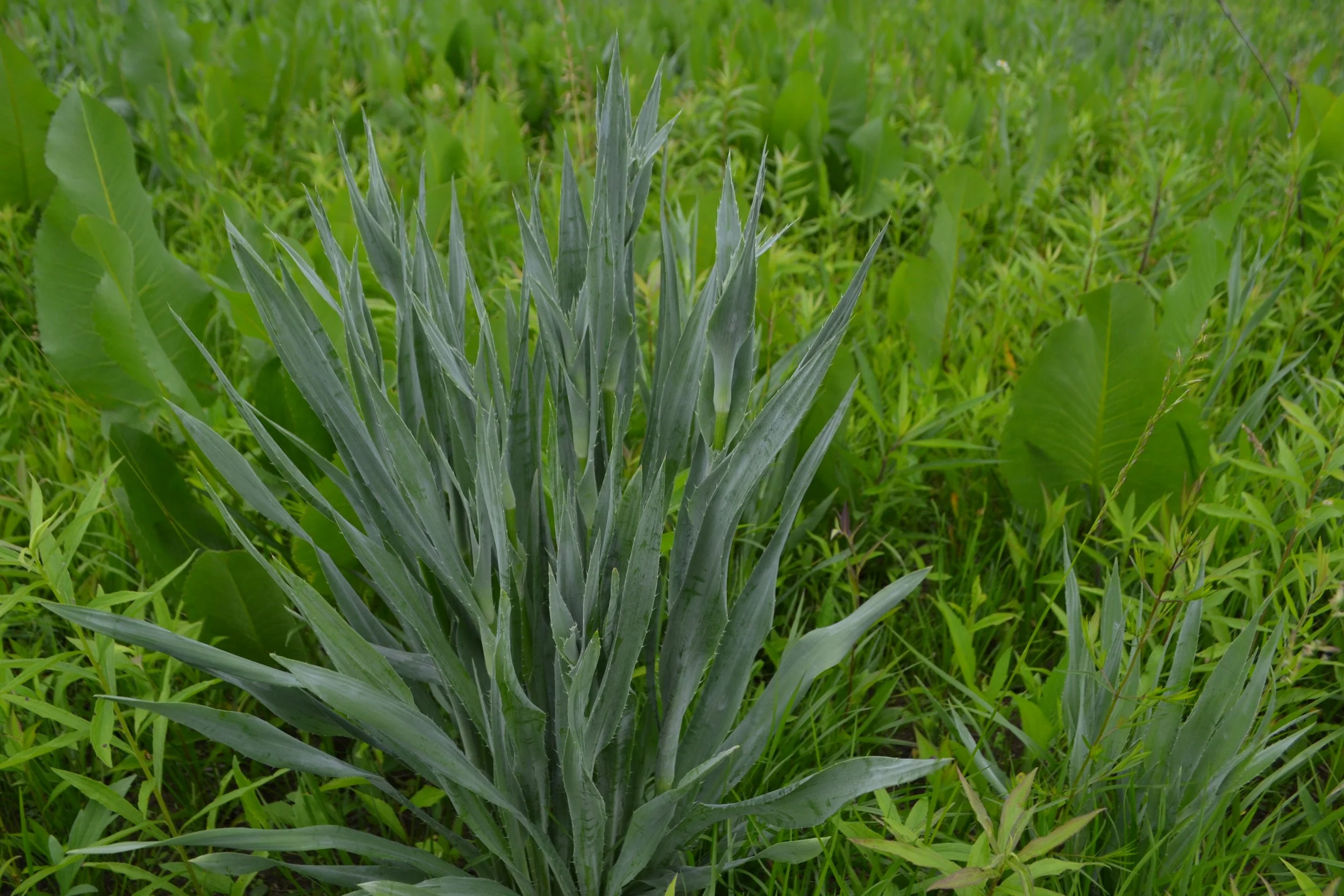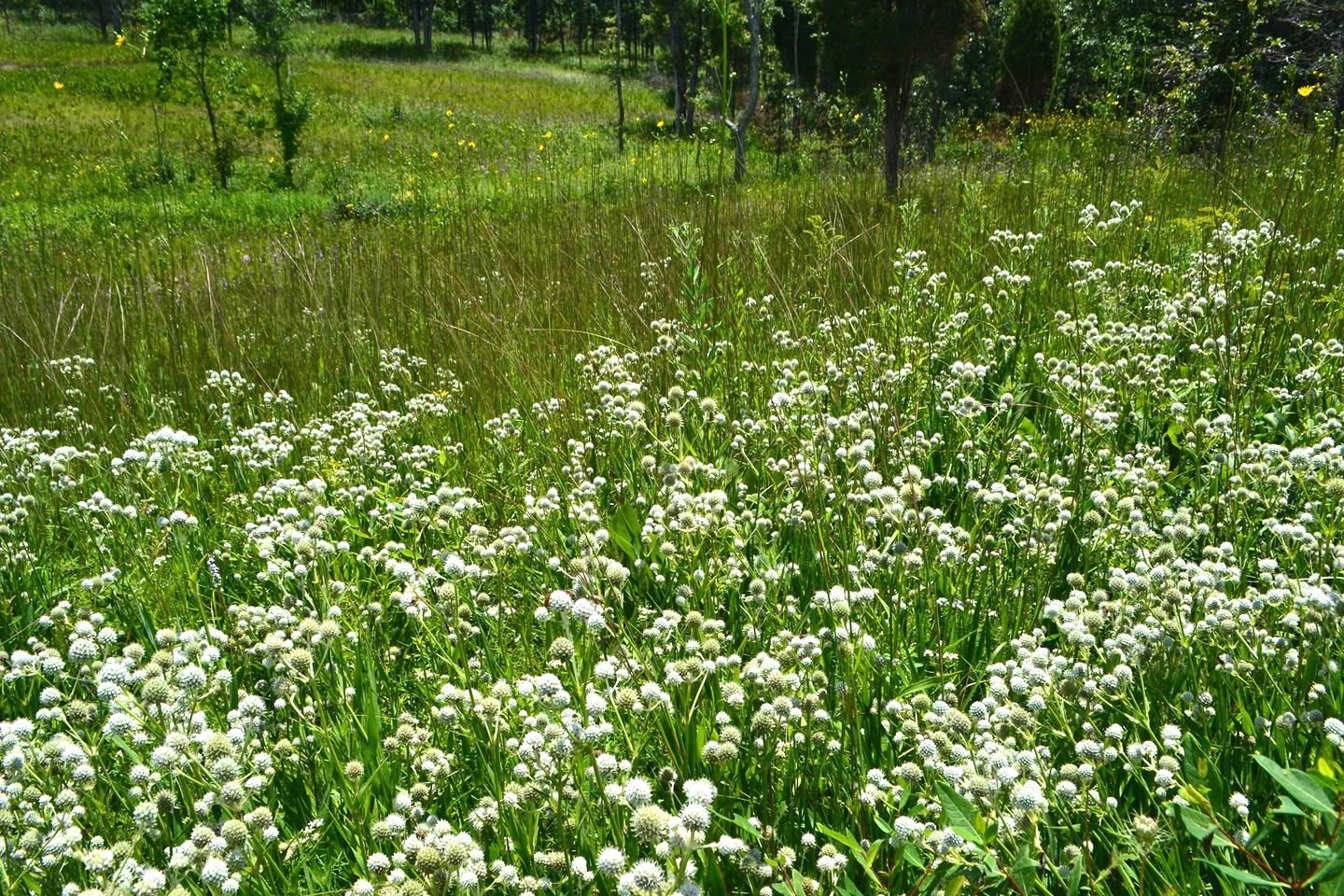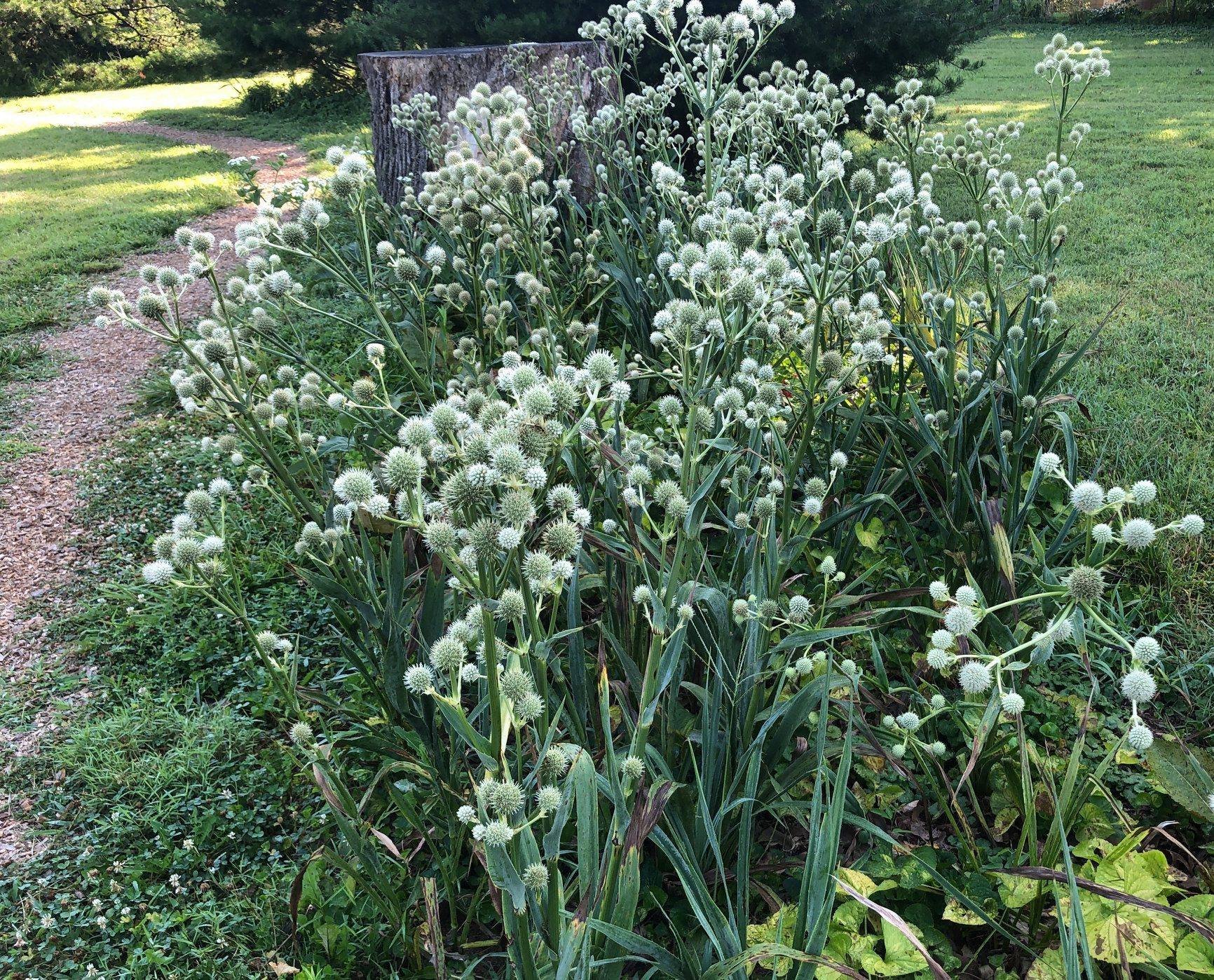Rattlesnake Master (Eryngium yuccifolium) is a perennial prairie plant in the carrot family (Umbelliferae) with striking blue-green-silver foliage and a unique sphere-shaped bloom. Rattlesnake Master can tolerate a wide range of soil conditions, from seasonally saturated to moist or drier rocky or sandy soil. Being a prairie plant, Rattlesnake Master requires at lest 6 hours of direct sunlight a day to thrive. The flowers attract a large variety of pollinators including long-tongued bees, short-tongued bees, wasps, flies, butterflies, skippers, moths, and beetles. Rattlesnake Master is sure to attract pollinators you’ve never seen before.
Its dominant root system makes it best planted in meadows or mass plantings where it's given good root competition from its neighbors. Otherwise it tends to get too big and floppy in pollinator gardens with less competition. When you install a native plant garden; accompanying the individual potted plants with a fall-seeded native seed mix will provide enough nutrient and water competition in the soil (root competition) to keep the plants upright and reduce flopping. This is a long lived plant in prairie communities and prairie plantings, capable of lasting long into grass domination, like Slender Mountain Mint. Grass domination often happens when there are no grazers grazing the prairie grass (Bison, Elk). Rattlesnake master is has good permanence and can survive when most wildflowers have succumbed to grass dominance. The texture and unique colored leaves makes it somewhat golden winter color, forming a valuable summer and winter aesthetic.
Pollinator Garden Positioning of Companion Plants
The following paragraph will help you position companion plants with Rattlesnake Master in Pollinator Gardens. In front should translate to being planted on the Southeast, South, or Southwest side of Rattlesnake Master. Behind translates to being planted on the Northeast, North, Northwest side of Culver’s Root. And beside is self-explanatory - East or West side of Rattlesnake Master
Blue Wild Indigo and White Wild Indigo - behind, Golden Alexander - beside or in front, Sand Coreopsis - in front, Penstemon species - in front, beside, or behind, Butterflyweed - in front or beside, Yellow Crownbeard - behind, Nodding Onion - in front, Purple Coneflower - beside, in front, or behind, Slender Mountain Mint - in front or beside, Royal Catchfly - beside or behind, Hoary Vervain - in front, beside, or behind, Rudbeckia fulgida - in front, beside, or behind, Prairie Dock - behind or beside, Mistflower - behind, in front, or beside, Dwarf Goldenrod - beside or in front, Showy Goldenrod - behind or beside, Aromatic aster - beside or in front, Obedient Plant - behind, Little bluestem - in front, beside, or behind, prairie dropseed - in front, beside or behind.
Germination Tips for Plugs: Soak in iced tap water for 36 hours, and cold stratify for 50 to 60 days then surface sow - compress into surface or burry 1/8th inch.
Creating a Patch of Rattlesnake Master
To create a patch of Rattlesnake master purchase 1 to 2 ounces of seed online. Work in the summer to prepare the area you'd like to establish by clearing the vegetation completely by fall using your preferred method. Mix the Rattlesnake Master seed with 1/4th ounce of Biennial Black Eyed Susan (Rudbeckia hirta) seed. This short-lived Black Eyed Susan will act as a ground cover (next year). This amount of seed is good for an 100 to 500 square foot patch/bed. Seed both species together over your prepared ground in late fall. Use a half 5 gallon bucket of dry sand to carry the seed helping you to spread it evenly over the plot. Both species will vegetate the land the following spring/summer as seedlings. Feel free to add seed from the companion plant list above to make the patch more diverse.
You can fast track your native plant learning with one of our books at Lovenativeplants.com/ourbooks - our next book sale opens July 29th, 2023 Saturday.


